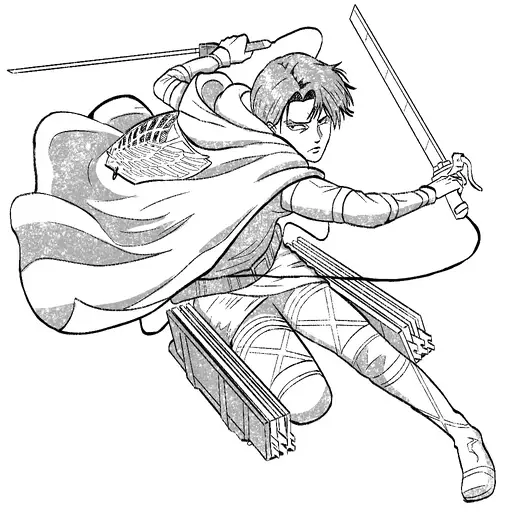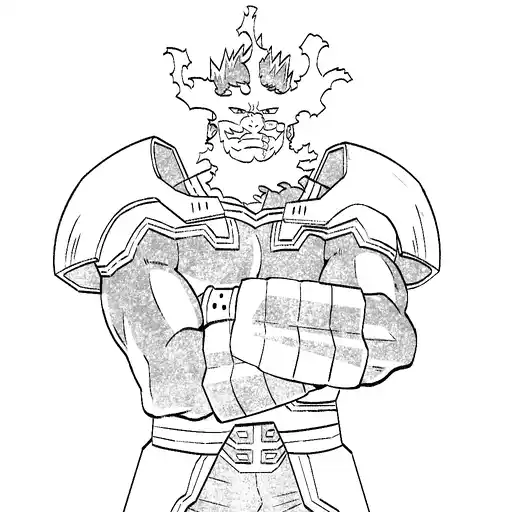Introduction
In the vast and imaginative realm of Japanese literature and anime, few narratives intertwine the elements of mystery, science fiction, and human emotion as engagingly as Hiro Arikawa’s “Sora no Naka.” This enthralling story, the second installment in Arikawa’s SDF Trilogy, commences with a series of mysterious aircraft accidents that send ripples of tension across the skies and into the hearts of its characters. As the story unfolds, a pilot from the Self-Defense Forces and an aircraft mechanic venture to an altitude of 20,000 meters to unearth the cause of these accidents. Meanwhile, on the serene beaches of Tosa province, high school students Shun and Kanae discover a mysterious creature, setting the stage for an adventure that binds earth and sky in an unprecedented crisis threatening humanity. This article delves into the intricacies of “Sora no Naka,” exploring its cultural significance, narrative depth, and the broader impact of its manga adaptation announced by LaLa magazine in August 2020.
Background and Context
The Genesis of the SDF Trilogy
Hiro Arikawa, a celebrated author in the realm of Japanese science fiction, crafted the SDF Trilogy to explore the delicate interplay between human emotion and technological advancement. The series, inspired by Japan’s Self-Defense Forces, consists of three novels: “Shio no Machi” (City of Salt), “Sora no Naka” (In the Sky), and “Umi no Soko” (Bottom of the Sea). Each installment weaves a standalone narrative while maintaining thematic cohesion, exploring the existential challenges and moral dilemmas faced by its characters.
The trilogy’s first novel, “Shio no Machi,” set the tone with its exploration of a city shrouded in salt, symbolizing societal decay and the resilience of the human spirit. “Sora no Naka,” however, elevates the stakes by shifting the battle to the skies, where the mysteries of the unknown are as vast as the horizon itself. LaLa magazine’s announcement of the manga adaptation in 2020 marked a pivotal moment, bringing Arikawa’s evocative storytelling to a broader audience and expanding its cultural footprint.
Themes and Motifs
Central to “Sora no Naka” is the theme of interconnectedness—between individuals, nature, and the unknown. The narrative juxtaposes the technological prowess of the Self-Defense Forces with the enigmatic beauty of the creature discovered by Shun and Kanae. This duality highlights humanity’s perpetual quest for understanding, both of the world around us and the inner workings of our hearts.
The novel also delves into the complexities of responsibility and duty. The pilot and mechanic’s mission to uncover the truth behind the aircraft accidents serves as a metaphor for the burdens we carry in the pursuit of knowledge and safety. Meanwhile, the students’ decision to care for the mysterious creature reflects the nurturing aspect of human nature, underscoring the importance of empathy in a world often dominated by logic and reason.
Main Insights
The Interplay of Science and Emotion
At the core of “Sora no Naka” is the delicate balance between scientific inquiry and emotional intuition. Arikawa masterfully crafts a narrative where technology and emotion are not in opposition but rather complementary forces. The Self-Defense Forces’ investigation into the aircraft accidents is driven by a logical quest for answers, yet it is the characters’ emotional journeys that provide the story with its depth and resonance. This interplay invites readers to consider the role of empathy in scientific endeavors, challenging the notion that emotional intelligence is secondary to analytical prowess.
Cultural Reflections and Societal Commentary
“Sora no Naka” offers a poignant reflection of contemporary societal issues, particularly in its portrayal of the Self-Defense Forces. In a world where military presence is often viewed through a lens of power and control, Arikawa presents a more nuanced perspective, highlighting the human aspect of those who serve. The novel invites readers to contemplate the ethical implications of military actions, encouraging a dialogue about peace, duty, and the preservation of humanity.
Moreover, the discovery of the mysterious creature by Shun and Kanae serves as a metaphor for the unknown aspects of our environment. In an era marked by rapid technological advancement and environmental change, the novel underscores the necessity of respecting and understanding nature’s mysteries. This narrative thread resonates with global audiences, reflecting universal concerns about ecological preservation and the impact of human activity on the natural world.
The Role of Adaptation in Expanding Narratives
The announcement of the manga adaptation of “Sora no Naka” by LaLa magazine signifies a critical moment in the trilogy’s evolution. Manga, as a medium, offers a unique platform for visual storytelling, allowing for the exploration of themes and emotions in ways that prose alone cannot achieve. The adaptation not only broadens the story’s reach but also provides an opportunity for reinterpretation and fresh perspectives.
Through dynamic artwork and visual symbolism, the manga adaptation brings to life the intricate details of Arikawa’s world, enhancing the narrative’s emotional impact. This visual dimension invites readers to engage with the story on multiple levels, fostering a deeper connection with the characters and their journeys.
Challenges and Opportunities
Navigating the Complexity of Adaptation
Adapting a novel like “Sora no Naka” into manga presents both challenges and opportunities. One significant challenge lies in maintaining the narrative’s depth while condensing its content to fit the manga format. This requires a careful balance between preserving the original story’s essence and leveraging the visual medium to enhance its impact.
However, this challenge also presents an opportunity to innovate and expand the narrative’s reach. By embracing the strengths of manga, such as its ability to convey emotion through artwork and its appeal to diverse audiences, the adaptation can introduce Arikawa’s story to new readers and inspire a renewed interest in the SDF Trilogy.
Future Outlook
The Evolving Landscape of Japanese Literature and Media
Looking ahead, the future of “Sora no Naka” and its adaptations offers exciting possibilities within the broader landscape of Japanese literature and media. As manga and anime continue to gain international acclaim, stories like Arikawa’s are poised to reach even wider audiences, transcending cultural and linguistic barriers.
The success of the “Sora no Naka” adaptation could pave the way for further explorations of Arikawa’s work, potentially inspiring adaptations of the remaining novels in the SDF Trilogy. This expansion would not only enrich the narrative universe but also contribute to the ongoing dialogue about the themes of interconnectedness, duty, and the balance between technology and emotion.
Conclusion
In conclusion, “Sora no Naka” stands as a testament to Hiro Arikawa’s ability to weave intricate narratives that resonate with readers across cultural and generational divides. Through its exploration of mystery, emotion, and the unknown, the story invites us to reflect on the complexities of human existence and our place within the world. As the manga adaptation breathes new life into the narrative, “Sora no Naka” continues to inspire and engage audiences, reminding us of the power of storytelling in bridging the gaps between earth and sky, logic and emotion. Whether experienced through the pages of a novel or the panels of a manga, the story’s enduring themes and compelling characters leave a lasting impact, encouraging us to look beyond the horizon and embrace the mysteries of life with curiosity and empathy.





